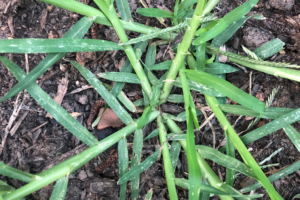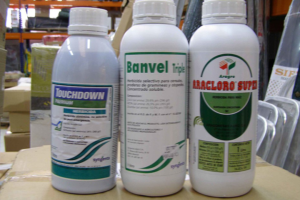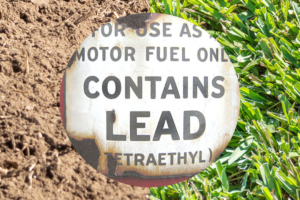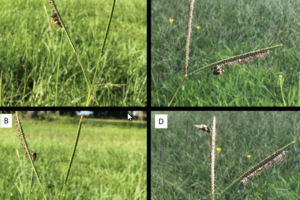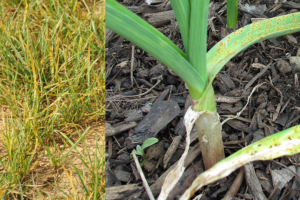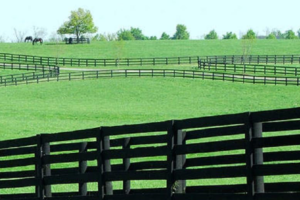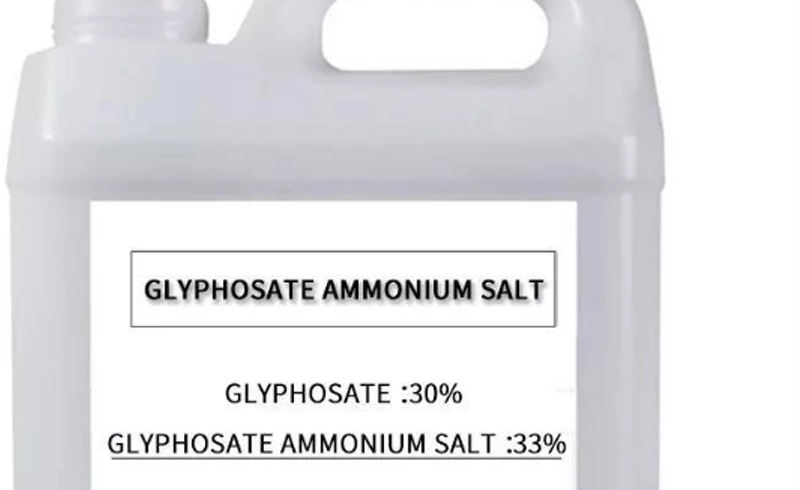
Introduction
What is Glyphosate and Why Should You Care?
Hey there, green thumbs and landscape lovers! Have you ever heard of glyphosate? It’s the active ingredient in many well-known weed killers you might use in your garden shed. It’s a real game-changer for keeping those pesky weeds at bay.
But here’s the kicker: not all weeds are created equal, and neither are all days for spraying them. That’s right; the weather can significantly affect how well this weed killer works. Stick around, and we’ll dive into the nitty-gritty of making the most out of your glyphosate-based weed killers.
The Star of the Show: Goosegrass
Meet goosegrass, the stubborn weed that loves to invade lawns and gardens. You might have seen this little troublemaker sprouting up between your roses or taking over patches of your lawn. It’s not just any weed; it’s a weed that has learned to outsmart some weed killers!
Why are we talking about goosegrass? Because it’s the perfect example of how glyphosate can sometimes meet its match and what you can do about it. Don’t worry; we have tips and tricks to help you win the battle against even the toughest weeds.
Why Timing and Weather Matter
You might be thinking, “Weed killer is weed killer, right? Just spray and go!” Well, slow down. The effectiveness of your weed killer can change depending on the weather. Yep, you heard that right! The temperature outside can make your weed killer work like a charm or make it a dud.
This isn’t just garden gossip; it’s backed by science. Recent studies have shown that the temperature can influence how well glyphosate works, especially against tough weeds like goosegrass. So, choosing the right day to tackle those weeds could mean the difference between a weed-free paradise and a garden full of stubborn stragglers.
This introduction sets the stage for a deeper dive into glyphosate and weed control. We’ve got a lot of ground to cover (pun intended!), so let’s get started! Whether you’re a weekend gardener or a full-time landscaper, this guide will give you the knowledge you need to make your outdoor spaces look their best.
What is Glyphosate?
The Basics of Glyphosate
What It Is:
Glyphosate is the superhero of weed killers, the main ingredient in many herbicides at your local garden center. It’s been around for years and is trusted by professional landscapers and home gardeners to keep lawns and gardens weed-free.
Why It’s Popular:
One of the reasons glyphosate is so popular is its versatility. It’s effective against various weeds, from dandelions to more stubborn varieties. It’s like the Swiss Army knife of weed killers, useful in many situations.
How Glyphosate Works
The Science Simplified:
Imagine weeds are like little factories, and these factories need a specific part to keep running. Glyphosate messes with that part, effectively shutting down the factory. In more scientific terms, it blocks a specific pathway that the weed needs to grow.
Why It Sometimes Fails:
But here’s the thing: Some weeds are like factories with backup generators. They’ve found a way to keep running even when glyphosate tries to shut them down. These are “glyphosate-resistant” weeds, which can be a real headache.
Safety and Environmental Concerns
Is It Safe?:
You might have heard some debates about the safety of using glyphosate. The key is to use it responsibly. Always follow the instructions on the label and take necessary precautions like wearing gloves and keeping pets and kids away during application.
Environmental Impact:
As for the environment, glyphosate breaks down relatively quickly in the soil, making it less likely to cause long-term issues. However, it’s always good to be mindful of where you’re spraying, especially near water sources or beneficial plants.
This section aims to give you a solid understanding of glyphosate, how it works, and some of the considerations you should consider. With this knowledge, you’ll be better equipped to tackle those pesky weeds trying to take over your beautiful garden or lawn.
Meet the Stubborn Weed: Goosegrass
What is Goosegrass?
Identifying the Weed:
Goosegrass is that annoying, flat-growing weed that appears everywhere, from your lawn to your flower beds. It has a star-like pattern and can spread if you don’t catch it early. It’s the uninvited guest that keeps coming back.
Why It’s a Problem:
The issue with goosegrass is that it’s more than just a visual nuisance; it’s a tough competitor for your other plants. It hogs nutrients and water, making it harder for your flowers and grass to thrive. Plus, it can become a tripping hazard if it grows on paths or in high-traffic areas.
Why is Goosegrass Resistant to Glyphosate?
The Science of Resistance:
Think of goosegrass as the weed with a shield. While most weeds will succumb to glyphosate, goosegrass has developed ways to fend it off. It has built-in armor that makes it harder for the weed killer to do its job.
Implications for Your Garden:
This means a simple spray might not eliminate this stubborn weed. You might need to bring in the big guns, like multiple treatments or mechanical removal, to ensure it doesn’t take over your garden.
How to Effectively Control Goosegrass
Best Practices:
So, how do you deal with this stubborn intruder? Timing is everything. You’ll want to tackle goosegrass when it’s young and less established. Young weeds are less likely to have developed complete resistance and are easier to remove.
Alternative Methods:
If glyphosate isn’t doing the trick, don’t lose hope. There are other methods to control goosegrass, like pre-emergent herbicides, that stop the weed before it grows. You can also go old-school and pull it out by hand, ensuring you get the roots.
This section gives you the lowdown on goosegrass, a weed that has been giving gardeners and landscapers a hard time due to its resistance to glyphosate. But don’t worry; with this knowledge, you’ll be well on your way to reclaim your garden and make it the oasis it was meant to be.
How Weather Affects Weed Killing
The Impact of Temperature on Glyphosate
Why Temperature Matters:
Do you know how you feel more active on a sunny day and sluggish when it’s cold? Well, glyphosate feels the same way! On warmer days, this weed killer is more effective at shutting down those annoying weeds. It’s like it gets an extra boost of energy from the sun.
The Science Behind It:
It’s not just a coincidence; there’s science to back this up. Studies have shown that glyphosate is more effective at higher temperatures. So, if you’re planning a weed-killing spree, check the weather forecast first. A warm, sunny day is your best bet for maximum weed-killing power.
Timing Your Weed-Killing Efforts
When to Spray:
Timing is everything, especially when it comes to weed control. The best time to go on the offensive is when the weeds are young, and the temperature is warm. Young weeds haven’t developed their complete resistance yet, and the warm temperature will make the glyphosate more effective.
Weather Forecast and Planning:
Watch the weather forecast. Look for warm days without rain. Rain can wash away the glyphosate, making your efforts less effective. So, a dry, warm spell is the perfect time to declare war on those weeds.
Tips for Using Glyphosate in Different Weather Conditions
Hot Weather Tips:
In hot weather, spray during the more excellent parts of the day, like early morning or late afternoon. This helps the glyphosate stick to the weeds better and gives it time to be absorbed before the day’s heat evaporates.
Cold Weather Tips:
If it’s on the cooler side, but you can’t wait any longer to tackle your weeds, you can still use glyphosate but be prepared for it to act more slowly. You might also need to apply a second treatment to get the full effect.
This section is all about helping you understand how weather conditions can make or break your weed-killing efforts. With these tips and insights, you can plan your attack more effectively, ensuring no weed dares to rear its ugly head in your beautiful garden or lawn.
What Happens to Plants?
Visible Changes After Using Glyphosate
Signs of Effectiveness:
After you’ve sprayed glyphosate, you’ll start to see some changes in the weeds. They’ll wilt and turn yellow, almost like surrendering to your garden prowess. This is a good sign that the glyphosate is doing its job and disrupting the weed’s growth.
Don’t Celebrate Too Soon:
However, don’t break out the champagne just yet. Some weeds, especially resistant ones like goosegrass, might show these signs but then return. It’s like they’re playing possum. So, please keep an eye out for a few days to make sure they’re gone.
Why Some Weeds Survive
The Resilient Ones:
Do you ever wonder why some weeds bounce back even after spraying them? These are the tough guys of the weed world. They’ve developed ways to cope with glyphosate, almost like having a bulletproof vest that protects them from the weed killer’s effects.
What to Do About It:
If you notice some weeds are staging a comeback, it might be time to switch tactics. Consider using a different type of herbicide or combining chemical and mechanical methods, like pulling them out by hand after spraying.
The Impact on Your Desired Plants
Protecting the Good Guys:
While on your weed-killing mission, remember the plants you want to keep! Glyphosate doesn’t discriminate; it can harm your flowers and veggies too. So be careful when spraying, and try to target only the weeds.
How to Minimize Damage:
You can use a shield or barrier when spraying or even a paintbrush to apply the herbicide directly onto the weeds to protect your prized plants. This way, you minimize the risk of damaging the plants you want to keep healthy and vibrant.
This section dives into what happens to plants—both the weeds and your desired plants—when you use glyphosate. Understanding these effects can help you use glyphosate more effectively and protect the plants you love. With this knowledge, you can create a beautiful, weed-free garden.
Quick Tips and Takeaways
Timing is Everything
The Importance of Timing:
When it comes to using glyphosate, timing is everything. The best time to wage war on those weeds is when they’re young and haven’t yet built up their defenses. Young weeds are like rookies; they’re less challenging and easier to knock out.
Weather and Timing:
Also, keep an eye on the weather. A warm, sunny day will make your glyphosate much more effective. Think of it as giving your weed killer a little extra kick. So, before you head out with your sprayer, check the forecast and plan accordingly.
Safety First
Protective Measures:
Safety should always be your top priority when using any chemicals in the garden. Wear gloves and eye protection, and keep pets and little ones away from the area until the herbicide has dried. It’s better to be safe than sorry.
Reading the Label:
Don’t just skim through the instructions on the glyphosate bottle; read them carefully. The label will tell you how much to use, how to apply it, and any other precautions you should take. Following the guidelines will ensure you get the best results while staying safe.
Alternative Methods
Other Herbicides:
If glyphosate isn’t cutting it, especially with those stubborn, resistant weeds, consider using a different herbicide. Many options target specific types of weeds or work in different ways.
Mechanical Removal:
Sometimes, you just can’t beat the classics. Good old-fashioned hand-pulling can be effective, especially if you get the roots. Pulling it out by the roots can be the final knockout punch if you’ve sprayed a weed and it’s still hanging on.
Final Thoughts
Be Observant:
After you’ve applied glyphosate, keep an eye on your garden. Watch how the weeds respond and how your desired plants are doing. This will help you know if you need to reapply or try a different approach.
Continuous Learning:
Gardening is a journey, not a destination. The more you learn about how weather and resistance affect your weed control efforts, the better your garden will be. So keep reading, keep experimenting, and most importantly, keep gardening!
Citation Source:
Citation: Guo W, Zhang C, Wang S, Zhang T and Tian X (2023) Temperature influences glyphosate efficacy on glyphosate-resistant and -susceptible goosegrass (Eleusine indica). Front. Plant Sci. 14:1169726. doi: 10.3389/fpls.2023.1169726

Bob Green, a passionate lawn care enthusiast with over two decades of landscaping experience, is this website’s proud owner. His vast knowledge of horticulture and dedication to helping homeowners maintain beautiful lawns are reflected in the valuable content he shares on his platform. John has always been interested in Agrostology.









